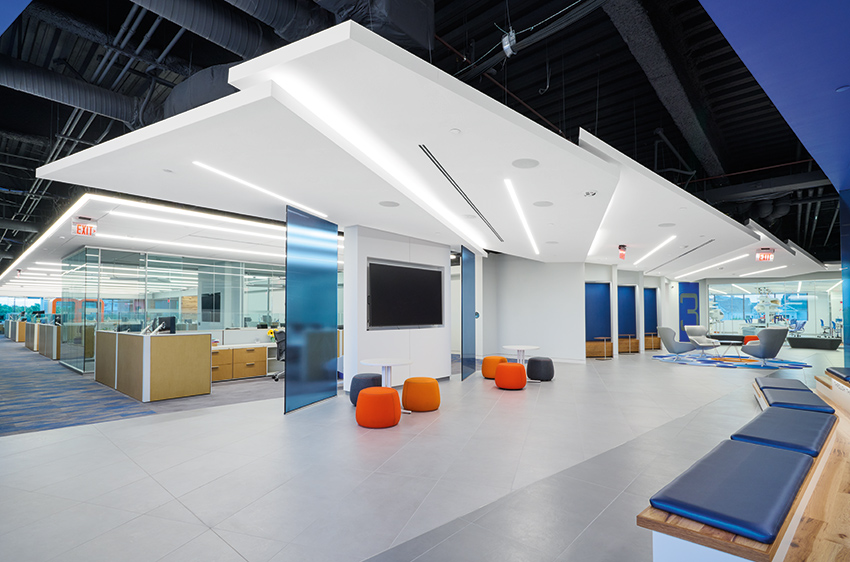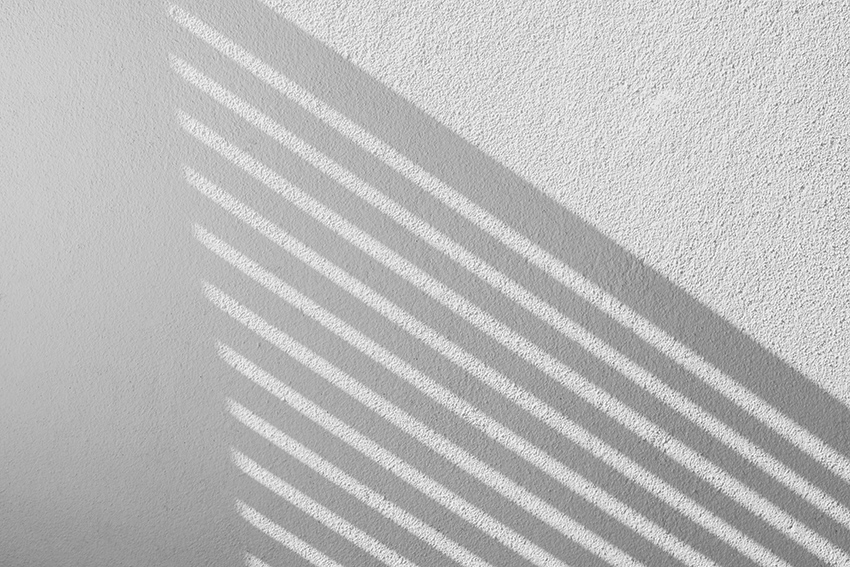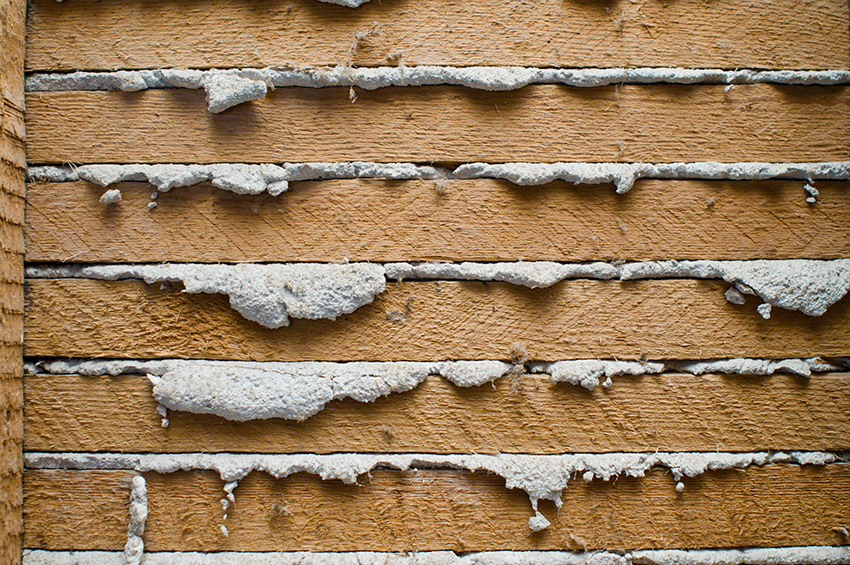How to Specify Seamless Acoustical Ceilings
 1 AIA LU/HSW; 1 IDCEC CEU/HSW; 1 GBCI CE Hour; 0.1 ICC CEU; 0.1 IACET CEU*; 1 AIBD P-CE; AAA 1 Structured Learning Hour; This course can be self-reported to the AANB, as per their CE Guidelines; AAPEI 1 Structured Learning Hour; This course can be self-reported to the AIBC, as per their CE Guidelines.; MAA 1 Structured Learning Hour; This course can be self-reported to the NLAA.; This course can be self-reported to the NSAA; NWTAA 1 Structured Learning Hour; OAA 1 Learning Hour; SAA 1 Hour of Core Learning
1 AIA LU/HSW; 1 IDCEC CEU/HSW; 1 GBCI CE Hour; 0.1 ICC CEU; 0.1 IACET CEU*; 1 AIBD P-CE; AAA 1 Structured Learning Hour; This course can be self-reported to the AANB, as per their CE Guidelines; AAPEI 1 Structured Learning Hour; This course can be self-reported to the AIBC, as per their CE Guidelines.; MAA 1 Structured Learning Hour; This course can be self-reported to the NLAA.; This course can be self-reported to the NSAA; NWTAA 1 Structured Learning Hour; OAA 1 Learning Hour; SAA 1 Hour of Core Learning
Learning Objectives:
- Discuss the challenge for architects to strike a balance between aesthetics, cost, and acoustic performance for the wellbeing of the occupant.
- Recognize the evolution and current options for smooth surface ceilings that improve acoustic performance.
- Compare performance, cost, and installation methods of seamless acoustical ceilings to ensure a healthy environment for occupants.
- List common misperceptions associated with seamless acoustical ceiling products.
This course is part of the Acoustics Academy
In the past, when architects designed ceilings, they have contended with the fact that they can achieve either a smooth, monolithic drywall aesthetic or excellent acoustics, but not both. One solution has been acoustical plaster systems, which have excellent acoustics and beautiful aesthetics, but they are expensive. Now a new acoustical drywall alternative offers a solution for spaces that require acoustics and need a drywall look at a lower cost. This course offers a look at the evolution of seamless acoustic and drywall ceiling solutions and provides concrete information on how this new technology benefits the occupant’s well-being.

Photo courtesy of Armstrong Ceiling and Wall Solutions
In the past, ceiling systems have been an area of compromise between acoustics and a monolithic appearance. Now, a seamless acoustical drywall alternative, like this one constructed for biotech company REGENXBIO, provides a ceiling system that combines high-quality acoustics with a seamless aesthetic.
Why Acoustical Ceiling Systems?
Good acoustical design for a given space is a matter of finding the right combination of sound absorption and blocking by using several well-developed tools to balance the acoustic characteristics within that space.
Due to the science-based study of architectural acoustics, acoustical materials and products have advanced. Since product manufacturers provide all necessary testing and report the results, it is easier for architects, interior designers, and acoustical consultants to make better informed, more holistic decisions about many of the materials and products used in a space. This is particularly true when it comes to ceilings which have proven to be a key surface affecting acoustical characteristics of virtually all spaces. Selecting materials based on the needs of different types of spaces is also important and has been studied and investigated as well.
Sound heard within a space is born of a combination of direct sound from sources and sound reflected off the various surfaces within the space. Highly reflective surfaces will redirect sound without significant changes except for direction. Typically, in large “hard surface” rooms, the reflections can delay reaching a listener, creating echoes. On the other hand, a highly sound-absorptive surface will diminish the reflected sound waves and reduce reverberation and echoes. Based on these different interactions between sound and spaces (i.e., room size, shape and volume, and the acoustic treatments within or between spaces), people can experience differing levels of speech intelligibility, speech privacy, or unwanted sound intrusion.

Stucco has gone through cycles of popularity, but it continues to be a desired material for seamless ceiling systems due to its fire and mold-resistant properties.

Stucco is applied as a smooth texture. It often has been used in open-space interiors, such as cathedrals, where its acoustics work well and its smooth texture can be utilized for frescoes.
Acoustics are an invisible element that designers must tackle, but they are often overlooked. As it turns out, acoustics are essential to the way occupants experience life inside a building and can significantly affect health, safety, and comfort. Considering a variety of venues such as hospitals, schools, retail, hotels, apartments, and offices, it’s easy to see how acoustics can directly impact occupants in a variety of ways.
In the past, ceiling systems have been an area of compromise. There is much more available today to meet the needs of architects looking for multifaceted systems that achieve more than one goal. While many projects have used traditional grid and ceiling tile design to their advantage and successfully made them a part of their interior design, many designers prefer a smooth, monolithic appearance with no visible grid when location allows. On the other hand, acoustical plaster—which has both a smooth look and beautiful aesthetics—is expensive, and some projects don’t have the budget for it.
This course provides an overview of what has been available to architects for smooth monolithic ceilings, including stucco, plaster, drywall, acoustical plaster, and a new technology system that combines drywall aesthetics with quality acoustics. Architects now have more options when designing for form and function; today they can achieve both while staying within budget. Although some spaces within a project require little more than a drywall ceiling, other spaces might call for investment in an acoustical drywall alternative that takes advantage of acoustical and drywall qualities without the high price tag of acoustical plaster.
For that reason, specifying ceiling systems is all about understanding the use of a particular space and taking into account the budget available. Here we talk about the pros and cons of each type of system, providing some history of the materials and their evolving uses over time.
Seamless Stucco
Stucco has a colorful and storied history as one of the oldest construction materials used by builders. It dates back as early as 1400 BC when it was used in Greece as a material for temples. Architects of ancient Rome used stucco for tombs and as a finish for brick monuments, such as for the opulent villa erected for Emperor Hadrian in Tivoli around 120 AD—a structure still regarded as one of the highest expressions of Mediterranean culture. As an interior material, it was used as an ideal seamless foundation for painted frescos and found even greater popularity during the Renaissance, beginning with the Italians, and spreading across Europe.
Traditional stucco was made of lime, sand, and water, but in the late 1800s, builders began to use stucco made of portland cement, sand, and water. Lime and other ingredients are sometimes added to the mixture to improve its structural properties, increasing permeability and workability. It involves up to four layers that include a dash coat, scratch coat, brown coat, and finish coat. Applying interior stucco finishes requires a special premeasured powder mix to which water is added before being sprayed on the surface.
Stucco has gone through cycles of popularity, but it continues to be a desired material for seamless ceiling systems for several reasons. It’s durable—resistant to fire, rot, impact, mold, and bug infestation—and it is capable of lasting up to 100 years or more depending on climate. Its ingredients can usually be obtained through local, sustainable sources, which puts it in the category of a “green” material. Aesthetically, its texture can provide an Old World-feel to the architecture of a room, which makes it both a building material and an architectural style. It has good color retention and pigments can offer a variety of colors for design. In terms of application, its high level of workability allows for a seamless look to interior ceiling systems.
Disadvantages of stucco include that it requires some amount of maintenance, including inspecting for cracks and holes that need to be addressed early on before they become a problem. Discoloration can also be an issue and not as easy to fix on interiors as it is on exterior stucco. Applying stucco is a specialized, labor-intensive process. It usually costs between $10 and $15 per square foot. And although stucco is flexible in application, it has a tendency to crack in areas where the building shifts over time. Finally, when stucco is not applied correctly, it can be prone to water retention, which leads to permanent water damage and, of course, added repair costs.
Additionally, stucco can provide some acoustic qualities, such as noise blocking, but it doesn’t provide any sound absorption, which is essential to proper use of interior space. It typically requires supplemental acoustical solutions to provide sound absorption depending on the use of the space.

Lath and plaster is a traditional building process that uses narrow strips of wood, called laths, and plaster squeezed between the slats for fortifying the structure.
Seamless Plaster Ceilings
Plaster has been used broadly since antiquity. It contains the same materials as stucco: sand, water, and a binding material such as lime, gypsum, or portland cement (or some combination of those). Its earliest iterations featured mud and then, later, lime. Natural lime fell out of favor when portland cement became popular in the 1800s. Unlike stucco, plaster is applied as a smooth texture and is more often used in interiors. It creates a protective cover over stone and brick, but also offers a seamless, aesthetically pleasing finish. It’s a powdered mixture that is applied in two coats.
Lath and plaster is a traditional building process developed during the 17th century that once served as the standard to finish ceilings. Narrow strips of wood, called laths, are nailed horizontally across the joists or wall stud. Next, the laths are coated in plaster. The plaster squeezes between the slats and “keys” behind the slat to hold itself on the wall or ceiling, fortifying the structure.
One interesting ingredient in plaster in its early years was horsehair. It acted as a bridging agent, keeping the plaster from shrinking and making it more durable. Other animal hair was sometimes used, but horsehair from the tail made for the best mixture, because it is long and strong. Horsehair plaster was time intensive to apply, so when drywall was invented, it soon replaced horsehair plaster.
Plaster has several benefits. It has a durable surface that lasts a long time and can be painted over easily. It is mold-resistant and easy to clean, and thick plaster blocks sound well.
On the other hand, plaster does not provide good sound absorption. It is porous and can absorb moisture easily, which means you need at least a couple layers of paint to achieve the desired aesthetic. Once plaster cracks it is expensive and difficult to repair, often requiring removing a large portion of the material. It is generally more expensive to install than drywall. Owners should expect to pay up to $30 per square foot, which means it is not an ideal solution for every situation.
Seamless Drywall Ceilings
Drywall was invented by a major U.S. gypsum company in 1916 as a material to protect homes from urban fires. It was marketed as the poor man’s plaster and promised quick installation. It did not catch on right away. However, during the 1940s, it started gaining in popularity. Between 1946 and 1960, when more than 21 million new homes were built nationwide, drywall had become the system of choice because of its neat and tidy look. In a post-war world, the clean, monolithic style added a sense of security and calm the nation was looking for.










